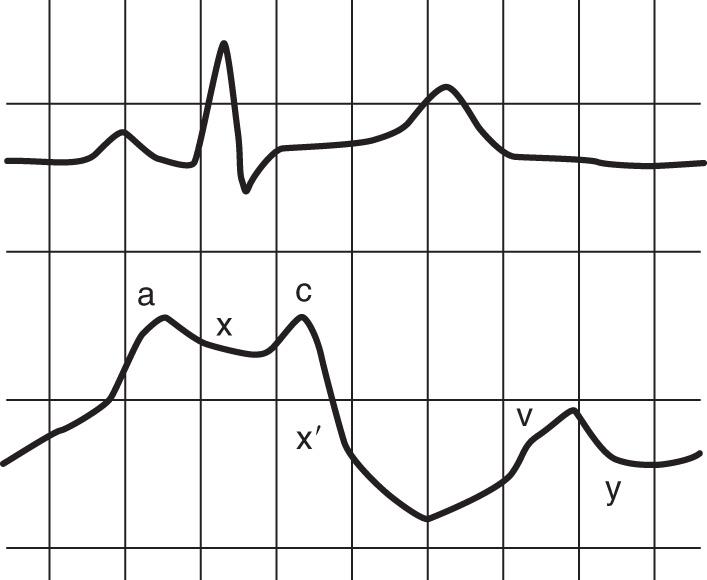Physical Address
304 North Cardinal St.
Dorchester Center, MA 02124
A Swan-Ganz catheter is a soft, flexible catheter with an inflatable balloon at its tip that is used in right-sided heart catheterization. The balloon tip allows the catheter to float with the flow of blood from the great veins through the right-sided heart chambers and into the pulmonary artery (PA) before wedging in a distal branch of the PA.
The most common Swan-Ganz catheter in current clinical use has four lumens. One is connected to the distal port of the catheter, allowing for measurement of PA pressure when the balloon is deflated and PA wedge pressure (PAWP) when the balloon is inflated. The second lumen is attached to a temperature-sensing thermocouple 5 cm proximal to the catheter tip and is used for measurement of cardiac output (CO) by thermodilution. The third lumen is connected to a port 15 cm proximal to the catheter tip, allowing for measurement of pressure in the right atrium and for infusion of drugs or fluids into the central circulation. The fourth lumen is used to inflate the balloon with air when initially floating the catheter into position and later to reinflate the balloon for intermittent measurement of PAWP. Many catheters contain an additional proximal port for infusion of fluids and drugs. Some catheters have an additional lumen through which a temporary pacing electrode can be passed into the apex of the right ventricle (RV) for internal cardiac pacing.
Direct measurements obtained from the catheter include vascular pressures and oxygen saturations within the cardiac chambers, CO, and systemic venous oxygen saturation (SvO 2 ). These hemodynamic measurements can be used to calculate other hemodynamic parameters, such as systemic vascular resistance and pulmonary vascular resistance (PVR).
At the bedside, venous access is usually obtained by introducing an 8 French sheath into the internal jugular or subclavian vein using the Seldinger technique. The right internal jugular or left subclavian veins are preferred sites because the natural curve of the catheter will allow easier flotation into the PA. The antecubital or femoral veins are less commonly used.
Next, a 7.5 French Swan-Ganz catheter is passed through the introducer sheath and advanced approximately 15 cm to exit the sheath into the central vein. The balloon is then inflated with 1.5 cc air, and the catheter is advanced slowly, allowing the balloon to float through the right atrium, RV, and PA, and finally achieving a wedge position in a distal branch of the PA that is smaller in diameter than the balloon itself. The wedge position is usually achieved when the catheter has advanced a total of 35 to 55 cm, depending on which central vein is cannulated and the size of the heart and patient.
The a wave is produced by atrial contraction and follows the electrical P wave on electrocardiogram (ECG). The x descent reflects atrial relaxation. The c wave is produced at the beginning of ventricular systole as the closed tricuspid valve bulges into the right atrium. The x ′ descent is thought to be the result of the descent of the atrioventricular ring during ventricular contraction and continued atrial relaxation. The v wave is caused by venous filling of the atrium during ventricular systole, when the tricuspid valve is closed. This should correspond with the electrical T wave. However, at the bedside, because of a lag in pressure transmission, the a wave will align with the QRS complex and the v wave will follow the T wave. Finally, the y descent is produced by rapid atrial emptying, when the tricuspid valve opens at the onset of diastole ( Figs. 12.1 and 12.2 ).


There are three ways to confirm that the catheter is in the wedge position. At the bedside, an atrial tracing (reflecting left atrial pressure) will be seen when the catheter is in the wedge position. Second, if the catheter is withdrawn from the wedge position, the mean arterial pressure should be observed to rise from the wedge pressure (reflecting a physiologic gradient between the mean PA and mean wedge pressure). Gentle aspiration of blood from the distal port should reveal highly oxygenated blood if the catheter is truly wedged. Additionally, in the catheterization laboratory, fluoroscopy can be used to determine that the catheter is in a distal pulmonary arteriole, immobile in the wedge position.
Become a Clinical Tree membership for Full access and enjoy Unlimited articles
If you are a member. Log in here